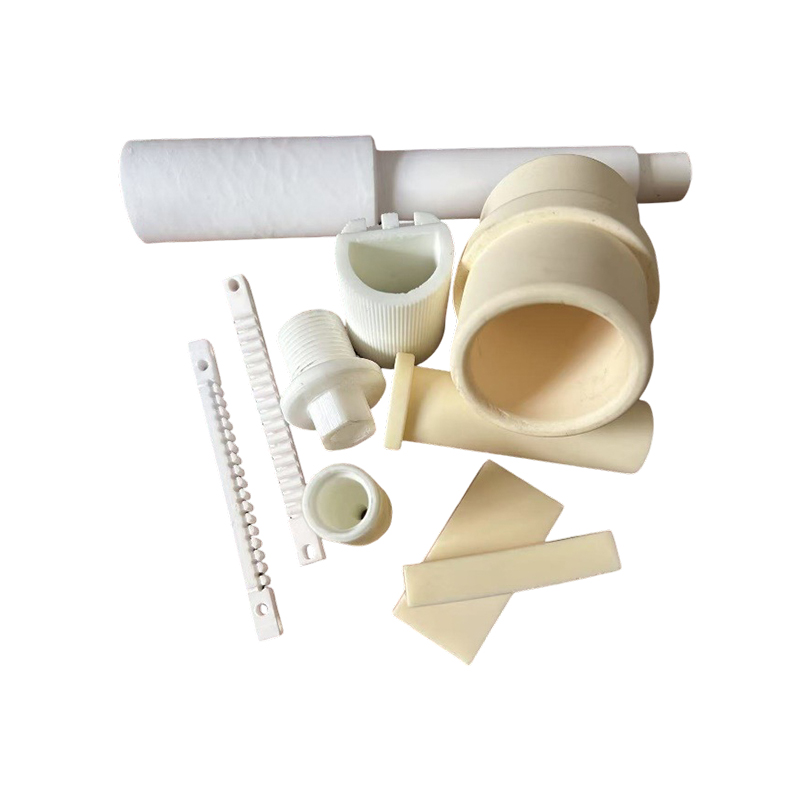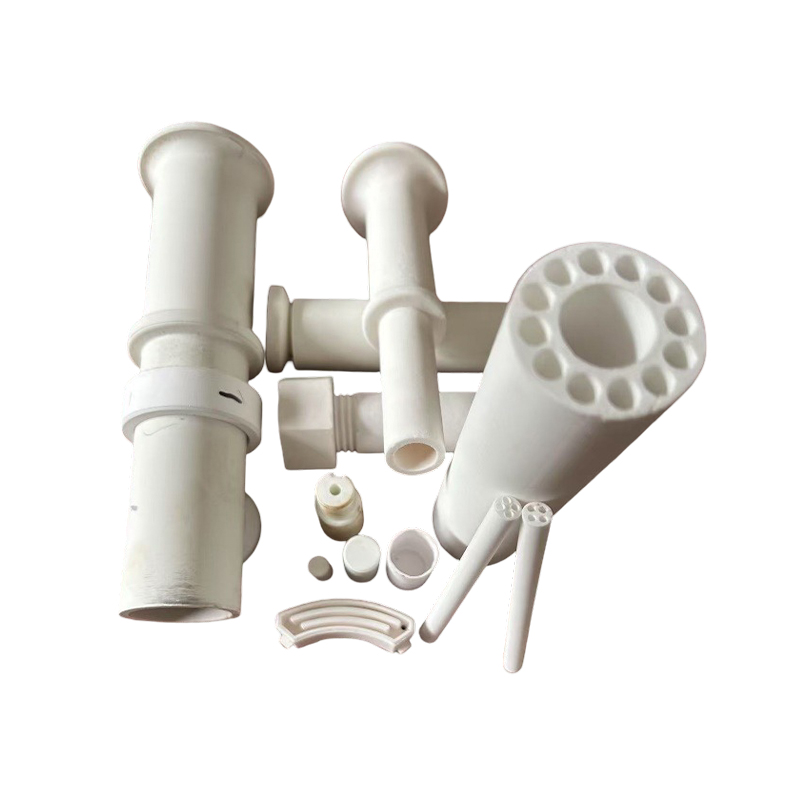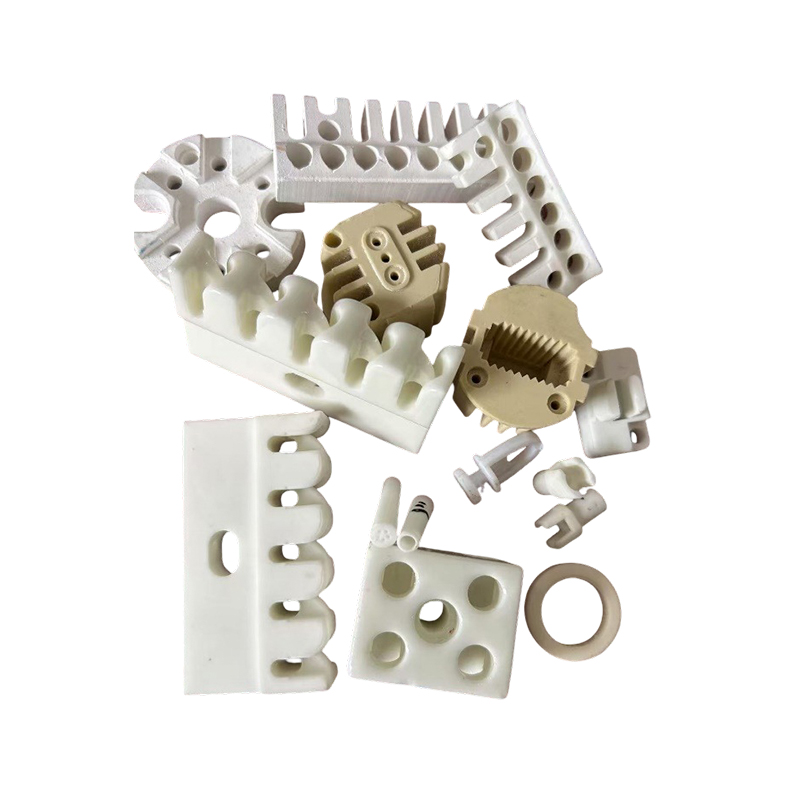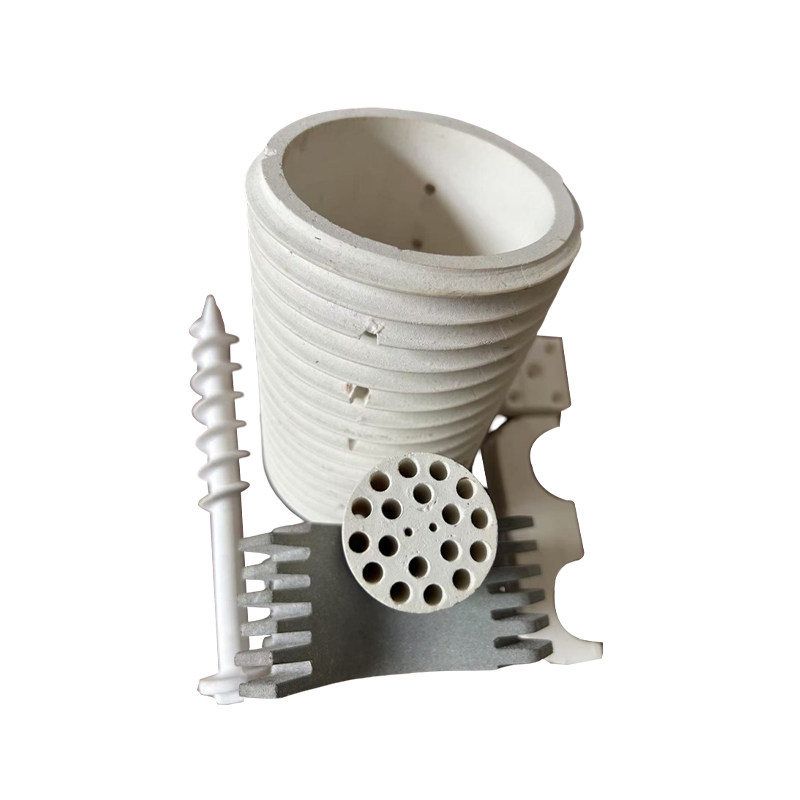How do the low thermal conductivity and high compressive strength of high-alumina ceramics achieve energy savings?
Release Time : 2025-08-22
In modern electric heating appliances and medium- and low-temperature heating equipment, material selection directly impacts the equipment's energy efficiency, safety, and service life. As a crucial carrier and protective structure for heating elements, furnace-grade high-alumina ceramics, with their excellent overall performance, low thermal conductivity and high compressive strength, are key factors in achieving energy savings and improving equipment reliability.
1. Low Thermal Conductivity: Reduces Heat Loss and Improves Thermal Efficiency
High-alumina ceramics generally refer to specialty ceramic materials with an alumina content of at least 75%, with high-grade products reaching 90% or even higher. In electric heating appliances, high-alumina ceramics are often used as support bases, insulating sleeves, or protective covers for heating wires or tubes. Due to their low thermal conductivity, heat is not readily transferred through the ceramic body to the equipment casing or surrounding structures, effectively reducing heat loss in non-operating areas. This means more heat energy is retained within the heating chamber, effectively heating the target object, significantly improving thermal efficiency. Furthermore, low thermal conductivity provides excellent thermal insulation. This lower external temperature not only improves operational safety, reduces the need for additional cooling, and minimizes thermal impact on surrounding materials, extending the life of the entire device. In continuously operating heating equipment, this "heat-retention and energy-saving" effect accumulates over time, significantly reducing energy consumption.
2. High Compressive Strength: Ensures Structural Stability and Extends Service Life
High alumina ceramics are not only heat-resistant but also possess extremely high compressive strength, far exceeding that of ordinary ceramics and refractory materials. This property ensures excellent mechanical stability even in high-temperature environments, making them resistant to deformation, cracking, or chipping. In heating element carrier applications, ceramic components often bear the weight of the heating wire, thermal expansion stress, and vibrations associated with equipment operation. High compressive strength prevents the ceramic bracket or insulator from collapsing or breaking under long-term high-temperature loads, effectively protecting the heating element from short circuits, open circuits, or localized overheating caused by support failure. More importantly, structural stability is directly related to heating uniformity and equipment operational safety. Damage to the ceramic support not only reduces heating efficiency but can also lead to safety incidents. High compressive strength provides enhanced reliability, reducing maintenance frequency and replacement costs, achieving a balance between energy conservation and cost-effectiveness throughout the entire lifecycle.
3. Synergistic Effect: Energy Saving, Durability, and Safety
Low thermal conductivity and high compressive strength are not isolated but rather jointly constitute the core advantages of high-alumina ceramics in electric heating applications. Low thermal conductivity reduces energy consumption, while high compressive strength ensures long-term stable operation. This combination makes high-alumina ceramics an ideal heating element carrier material. Furthermore, high-alumina ceramics offer advantages such as fire resistance, thermal shock resistance, excellent insulation, and strong chemical stability, further enhancing their adaptability to complex operating conditions. Even in environments with frequent starts and stops and drastic temperature fluctuations, they maintain stable performance and are less susceptible to cracking due to thermal shock.
High-alumina ceramics, with their low thermal conductivity, reduces heat loss, and high compressive strength, ensures structural durability, achieving significant energy savings in electric heating appliances and low- and medium-temperature heating systems. They not only provide superior protection for heating elements but also serve as a key material for improving equipment efficiency and extending its lifespan.
1. Low Thermal Conductivity: Reduces Heat Loss and Improves Thermal Efficiency
High-alumina ceramics generally refer to specialty ceramic materials with an alumina content of at least 75%, with high-grade products reaching 90% or even higher. In electric heating appliances, high-alumina ceramics are often used as support bases, insulating sleeves, or protective covers for heating wires or tubes. Due to their low thermal conductivity, heat is not readily transferred through the ceramic body to the equipment casing or surrounding structures, effectively reducing heat loss in non-operating areas. This means more heat energy is retained within the heating chamber, effectively heating the target object, significantly improving thermal efficiency. Furthermore, low thermal conductivity provides excellent thermal insulation. This lower external temperature not only improves operational safety, reduces the need for additional cooling, and minimizes thermal impact on surrounding materials, extending the life of the entire device. In continuously operating heating equipment, this "heat-retention and energy-saving" effect accumulates over time, significantly reducing energy consumption.
2. High Compressive Strength: Ensures Structural Stability and Extends Service Life
High alumina ceramics are not only heat-resistant but also possess extremely high compressive strength, far exceeding that of ordinary ceramics and refractory materials. This property ensures excellent mechanical stability even in high-temperature environments, making them resistant to deformation, cracking, or chipping. In heating element carrier applications, ceramic components often bear the weight of the heating wire, thermal expansion stress, and vibrations associated with equipment operation. High compressive strength prevents the ceramic bracket or insulator from collapsing or breaking under long-term high-temperature loads, effectively protecting the heating element from short circuits, open circuits, or localized overheating caused by support failure. More importantly, structural stability is directly related to heating uniformity and equipment operational safety. Damage to the ceramic support not only reduces heating efficiency but can also lead to safety incidents. High compressive strength provides enhanced reliability, reducing maintenance frequency and replacement costs, achieving a balance between energy conservation and cost-effectiveness throughout the entire lifecycle.
3. Synergistic Effect: Energy Saving, Durability, and Safety
Low thermal conductivity and high compressive strength are not isolated but rather jointly constitute the core advantages of high-alumina ceramics in electric heating applications. Low thermal conductivity reduces energy consumption, while high compressive strength ensures long-term stable operation. This combination makes high-alumina ceramics an ideal heating element carrier material. Furthermore, high-alumina ceramics offer advantages such as fire resistance, thermal shock resistance, excellent insulation, and strong chemical stability, further enhancing their adaptability to complex operating conditions. Even in environments with frequent starts and stops and drastic temperature fluctuations, they maintain stable performance and are less susceptible to cracking due to thermal shock.
High-alumina ceramics, with their low thermal conductivity, reduces heat loss, and high compressive strength, ensures structural durability, achieving significant energy savings in electric heating appliances and low- and medium-temperature heating systems. They not only provide superior protection for heating elements but also serve as a key material for improving equipment efficiency and extending its lifespan.







